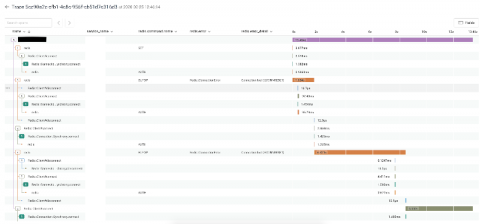Operations | Monitoring | ITSM | DevOps | Cloud
Observability
The latest News and Information on Observabilty for complex systems and related technologies.
What Observability Means to Digital Experience Monitoring
It would not be wrong to say that Observability is the new buzz word for the last couple of years at least and often we find organizations burden themselves with questions like – The answer to these questions lies in understanding the concept of Observability and how it ties in with the digital experience monitoring strategy of your organization and only then can you determine where you stand in terms of Observability.
Dogfooding for Deploys: How Honeycomb Builds Better Builds with Observability
Observability changes the way you understand and interact with your applications in production. Beyond knowing what’s happening in prod, observability is also a compass that helps you discover what’s happening on the way to production. Pierre Tessier joins us on Raw & Real to talk about how Honeycomb uses observability to improve the systems that support our production applications.
Using Observability as a Proxy for Customer Happiness
Today, users and customers are driven by response rates to their online requests. It’s no longer good enough to just have a request run to completion, it also has to fit within the perceived limits of “fast enough”. Yet, as we continue to build cloud-native applications with microservice architectures, driven by container orchestration like Kubernetes in public clouds, we need to understand the behavior of our system across all aspects, not just one.
Using Honeycomb to Investigate a Redis Connection Leak
This is the story of how I used Honeycomb to troubleshoot redis/redis-rb#924 and discovered a surprising workaround.
Logging tool no more: Observability sheds light on Dark's business growth and helps their customers scale
Dark is a programming language and platform that enables building serverless backends. There’s no infra, framework or deployment nightmares. It’s a new paradigm in software delivery. As a startup, the Dark team is constantly making decisions about where to invest in improvements to support customer needs. With Honeycomb, they can observe user behavior and make business decisions based on meaningful data.
Cloud Operations
Full Observability: From Push to Production
3 ways secrets management improves monitoring & observability
Monitoring — by its very nature — requires privileged access to internal and external services. In order to safely maintain visibility into critical systems, it’s vital to have some form of secrets management to manage authentication credentials (AKA, "secrets"), including passwords, keys, APIs, tokens, and any other sensitive pieces of information in your IT infrastructure.
The Evolution of Open Source Observability
On May 27, the first OpenObservability Conference was held to bring together leaders, practitioners, and users of leading open source observability tools for sessions on the experiences, strategies, and future of the industry. For the Logz.io team, as long-time proponents of open source, it was rewarding to see everyone come together to explore the challenges and opportunities of open source observability.











